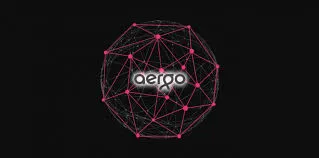Behind every great cryptocurrency, there is a great consensus algorithm
Consensus algorithms are key elements of blockchains and cryptocurrncies. It may be a little complicated to understand but I’d break it down as much as I can.

To start with, consensus means a generally accepted decision by a group of people. While algorithm is simply a set of rules for carrying out a task in a specified number of steps.
Put together, consensus algorithm is a set of rules with specific number of steps for executing a decision that has been generally agreed on by a group of people. Consensus algorithm ensures that all transactions on a network are authentic and verified. Transactions range from financial transactions to swapping of ownership rights down to access to dApps, etc. Consensus algorithms are put in place to prevent double spending. Different types of consensus algorithms include: POW, POA, POS, DPOS, BFT, DAG.
No consensus algorithm is perfect. Each of them have their pros and cons therefore each currency network has to decide a consensus algorithm that is suitable for their needs. AERGO supports different consensus algorithms and allows users to select the optimum consensus algorithm for their businesses, however, the default consensus algorithm for AERGO is DPOS (Delegated Proof of Stake).
PoW vs PoS vs DPoS
PoW (Proof of work):
is being used by popular cryptourencies such as Bitcoin, Ethereum, Litecoin, Doge, etc. It is the first blockchain consensus algorithm. In PoW, power is left in the hands of the miners who have to solve complex math problems to create blocks. It is also easy to understand. Giving all the miners the power results in massive power consumption and this is not the best choice for businesses because there is a possibility that a few dishonest miners may try to disrupt the network.
PoS (proof of stake):
Here power is not in the hands of miners but in the hands of minters who stake their tokens to vote for valid blocks. The drawback here is that it does not cost validators or minters any computational power to support a fork hence, validators might vote for both sides of every fork which can affect credibility and increase the security risk of businesses built on it.
DPOS:
Is used by EOS, Steem and Bitshares and has proved to be better than POS. Here token holders vote to elect delegates who will validate blocks for them. If delegates do not meet up with requirements they are voted out and replaced. DPOS is quite easy to understand and if the participants in the node are enterprises and service providers, there are less chances of a hard fork happening. AERGO selects DPOS because it possesses both economic incentives and social consensus.
Blocko’s COINSTACK Contribution to AERGO
AERGO has long term goals and announcements regarding the progress of the platform will be made frequently. As I mentioned inmy previous post, AERGO will utilize Blocko’s COINSTACK and build on it. Blocko will contribute some of its existing products and services as well as technical know-how to the AERGO platform.
Blocko’s Contributions to AERGO include:
• COINSTACK which will serve as the foundation of the AERGO protocol
• Sharing tested and proven deployment frame with AERGO
• Interested existing and potential future enterprise clients
• Active marketing, promotion and active support of AERGO services
• Technological and global partnerships for AERGO
Aergo Team is made up of a board, committee heads, tech team, business team and advisors all experienced and dedicated to the success of this innovative blockchain project for business enterprises.